

Plate 495 - On this plate depicted are the different depositional systems developed on the shelf, slope or abyssal plain, when sea level rises or falls whether in lowstand or highstand geological settings.
Plate 496- On this tentative interpretation of a seismic line, from the Gulf of Mexico, where the main sequence cycles boundaries, i.e., the main unconformities are indicated, all depositional hypotheses depicted on the Plate 495 can be illustrated as shown in next plate.
Plate 497- All depositional systems depicted on Plate 495 are illustrated above by close-ups of the seismic line shown in plate 496. Each of these close-ups is detailed in next plates (Plates 498 to 509).
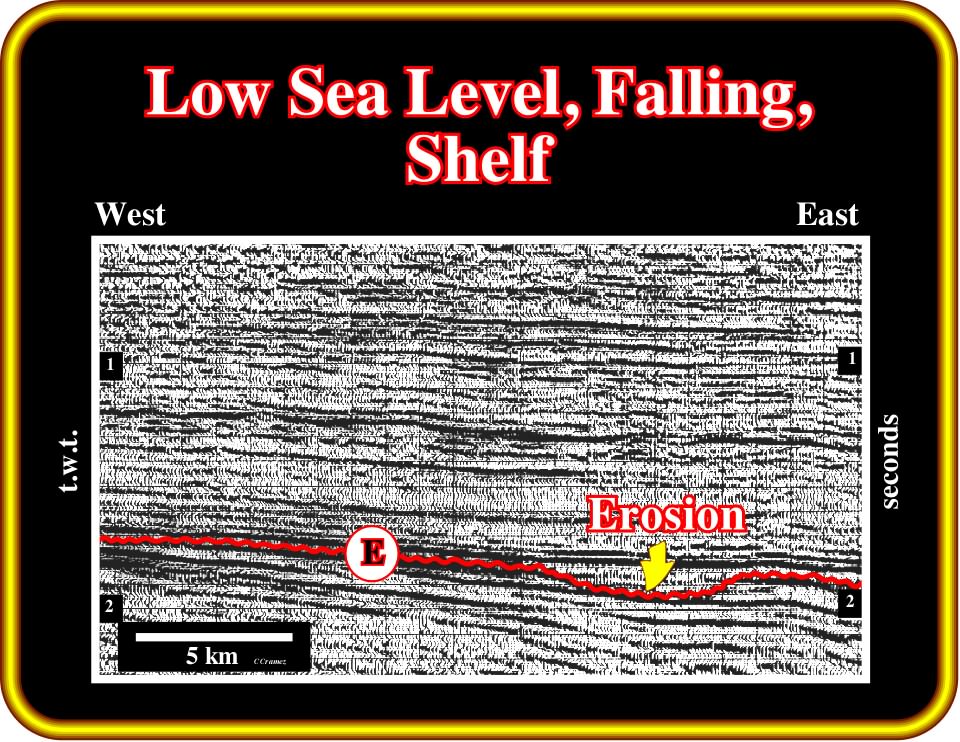
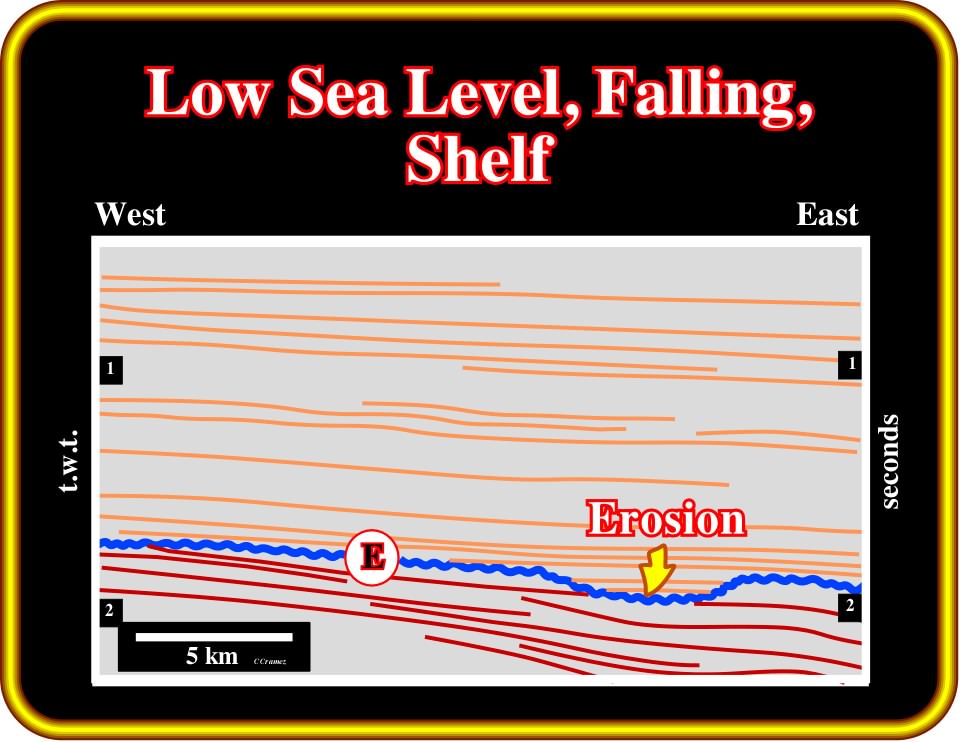
Plate 498- On this close-up, an incised valley, probably filled by shaly sediments (absence of differential compaction), suggests not only the most likely location of a sequence cycle boundary, but also: (i) a low sea level geological context due to a significant relative sea level fall and (ii) an exhumed coastal plain.
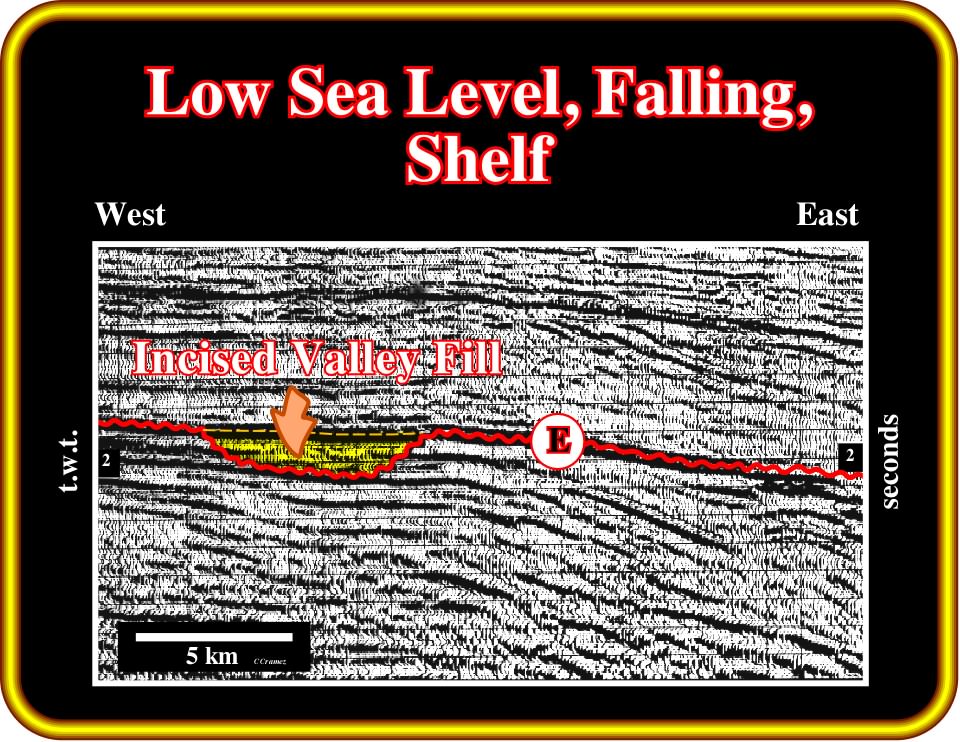
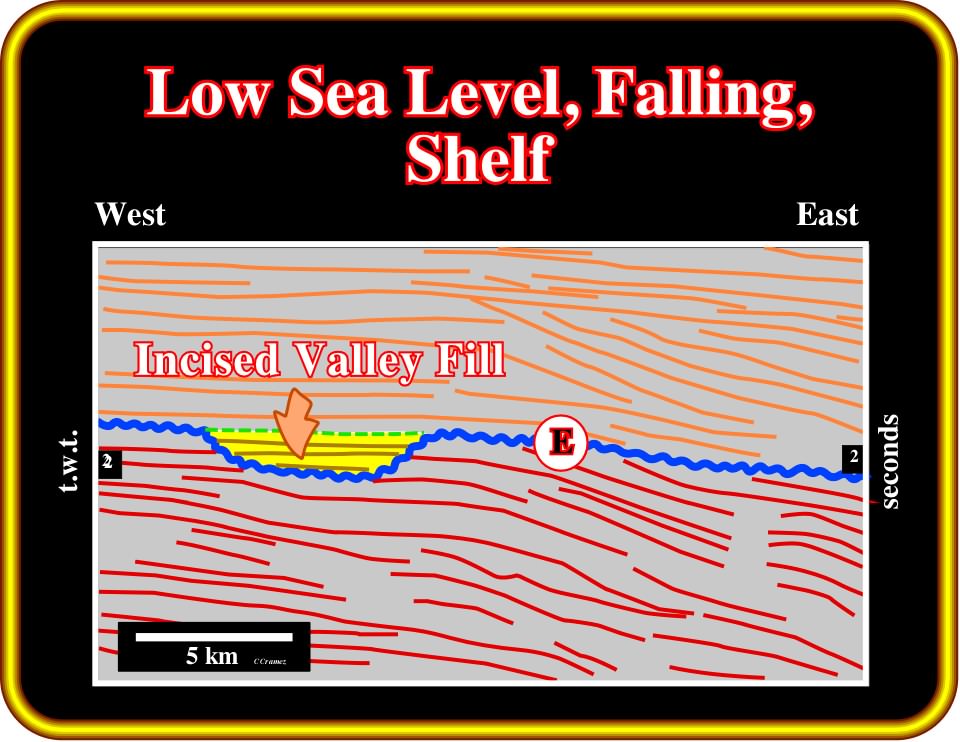
Plate 499- Here, the filling of an incised valley, i.e., the incised valley fill not only enhanced the E sequence-cycle boundary but also allow explorationists to recognize: (i) an exhumed shelf environment and (ii) rising of the relative sea level in a lowstand geological setting.
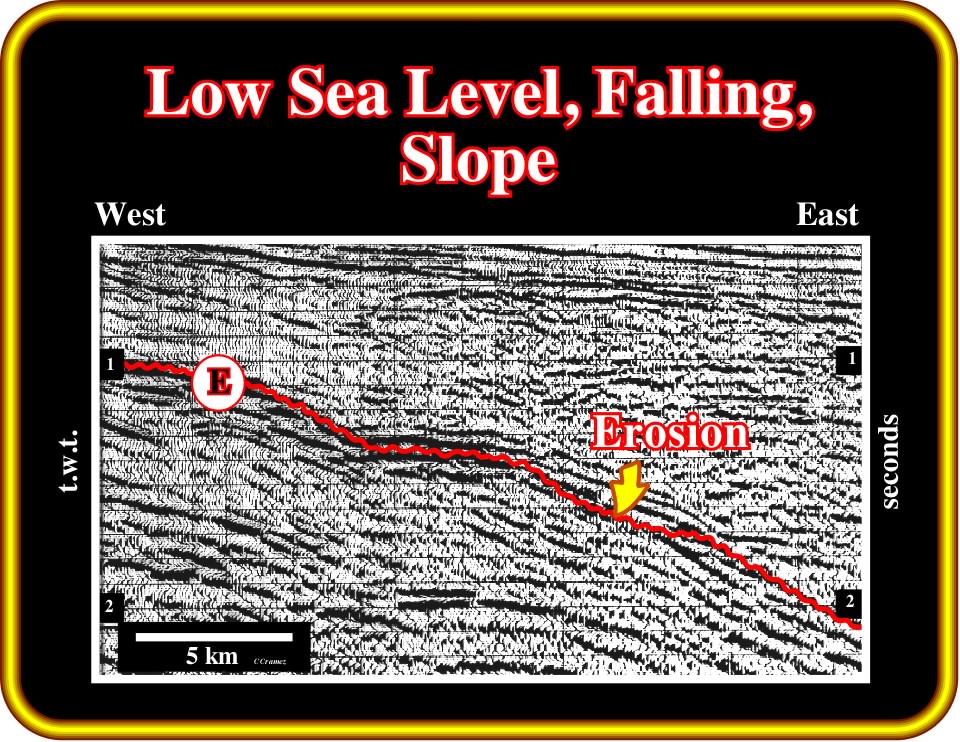
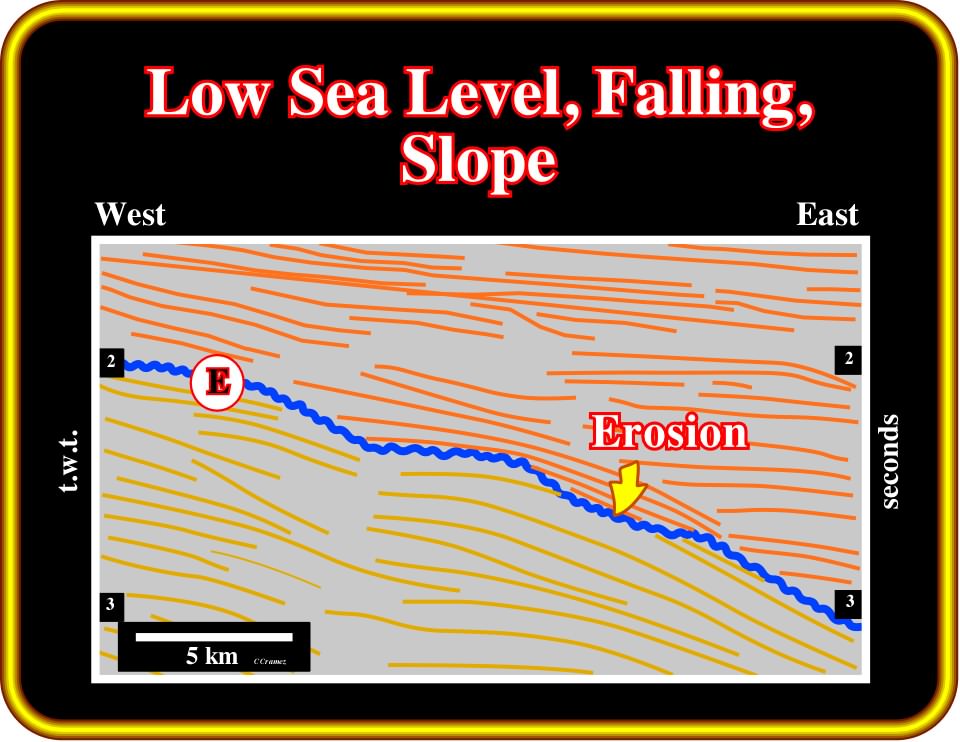
Plate 500- On this close-up, the erosion (submarine canyon) in the upper slope of the E sequence cycle boundary, suggests not only an obvious slope environment, but also a relative sea level fall responsible for the lowstand geological setting.
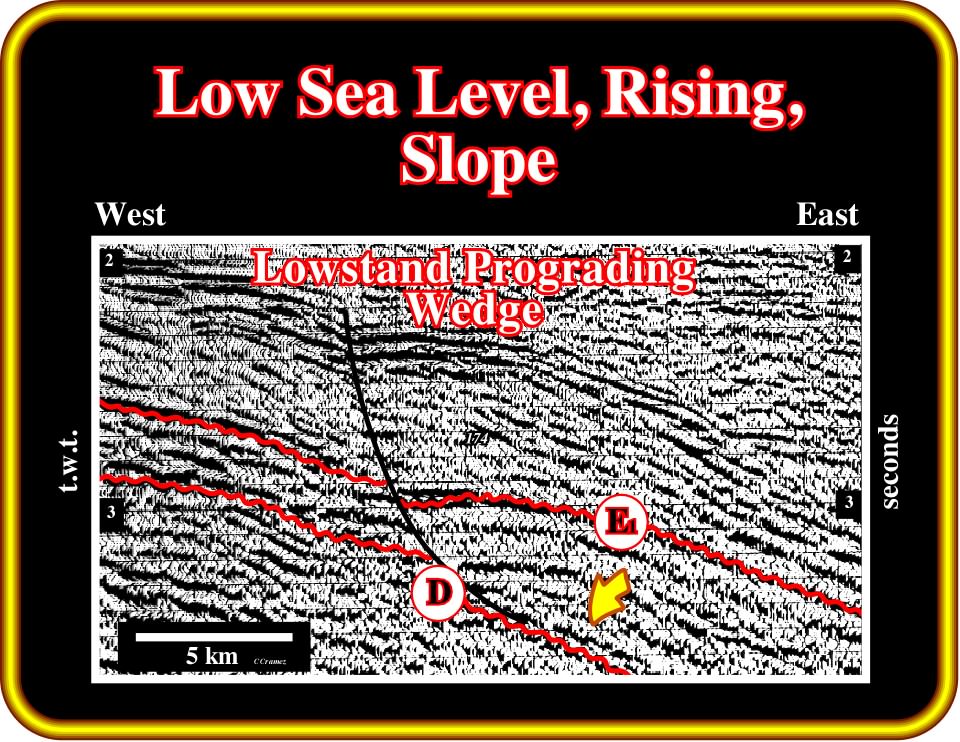

Plate 501- On this close-up, two sequence-cycle boundaries are illustrated. The shelf break at the D unconformity is enhanced by the listric normal fault. On the other hand, the lowstand prograding wedge, highlighted by the yellow arrow, suggests not only a slope environment but a rising of the relative sea level in a lowstand geological context as well.
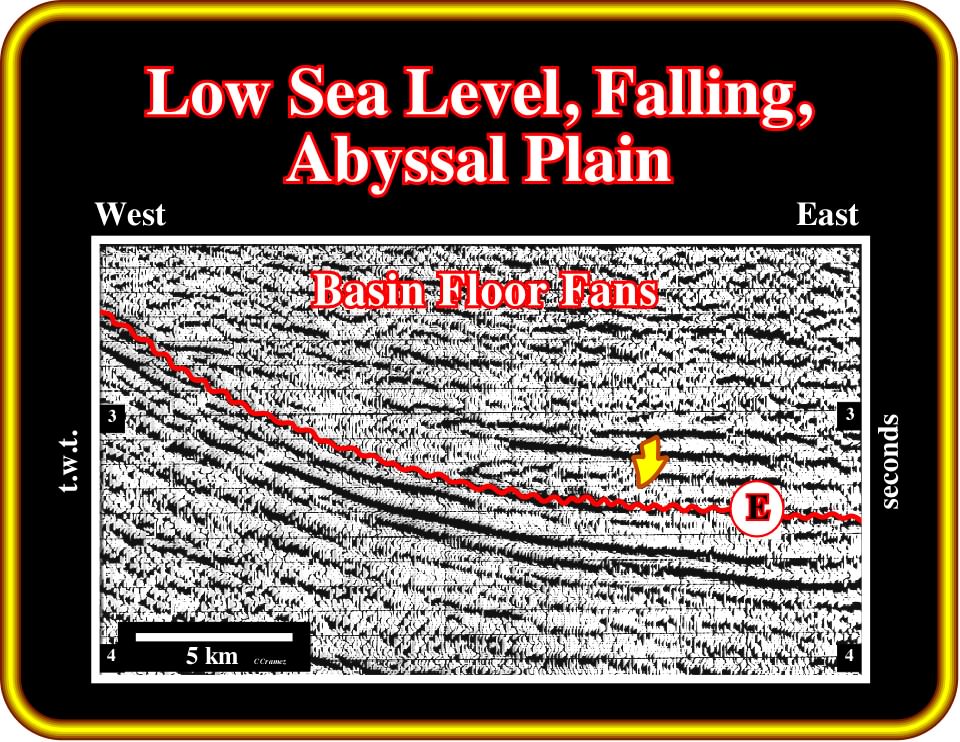
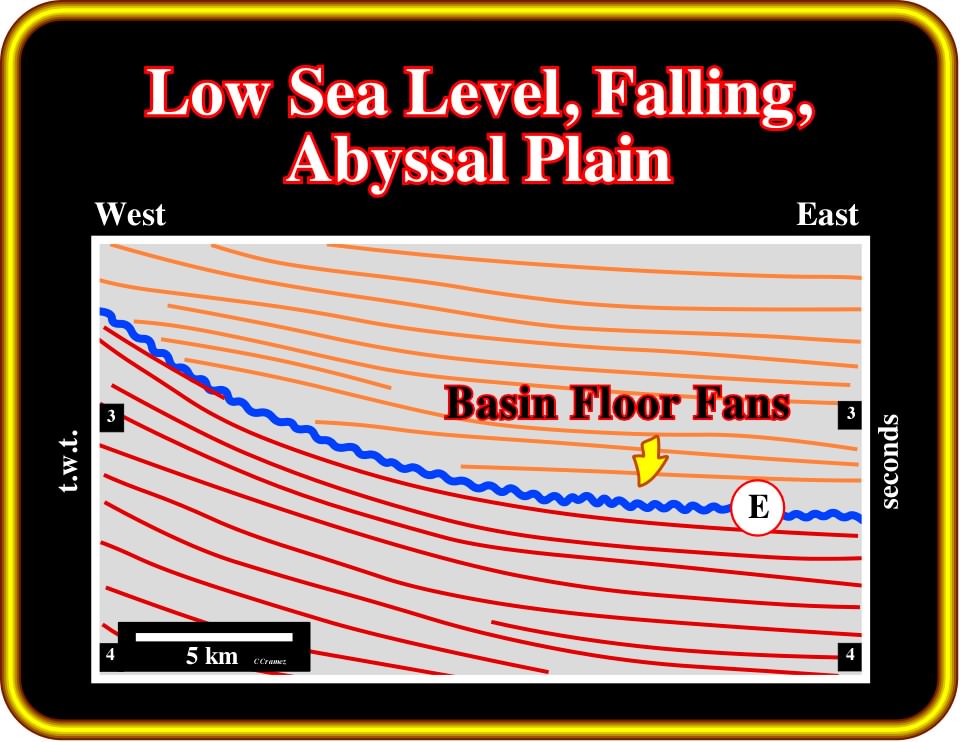
Plate 502- Here, the sedimentary anomaly at the bottom of the slope of the E sequence cycle boundary, suggests a falling of the relative sea level. The sea level fall created a lowstand situation and the deposition, on the abyssal plain, of a basin floor fan, which onlaps against the sequence-cycle boundary.
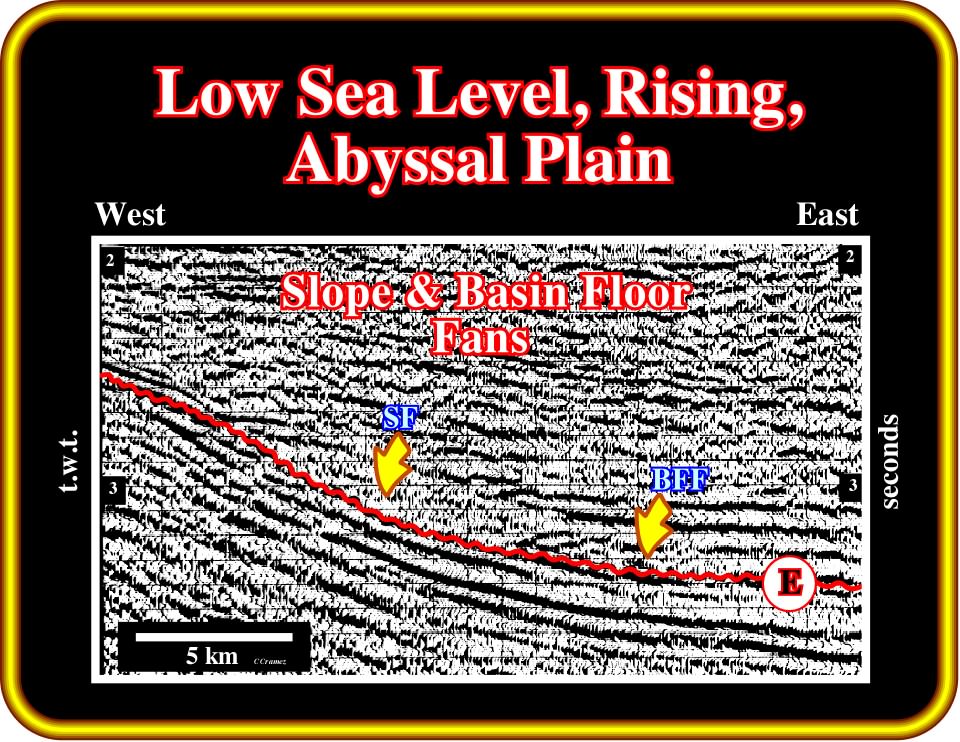
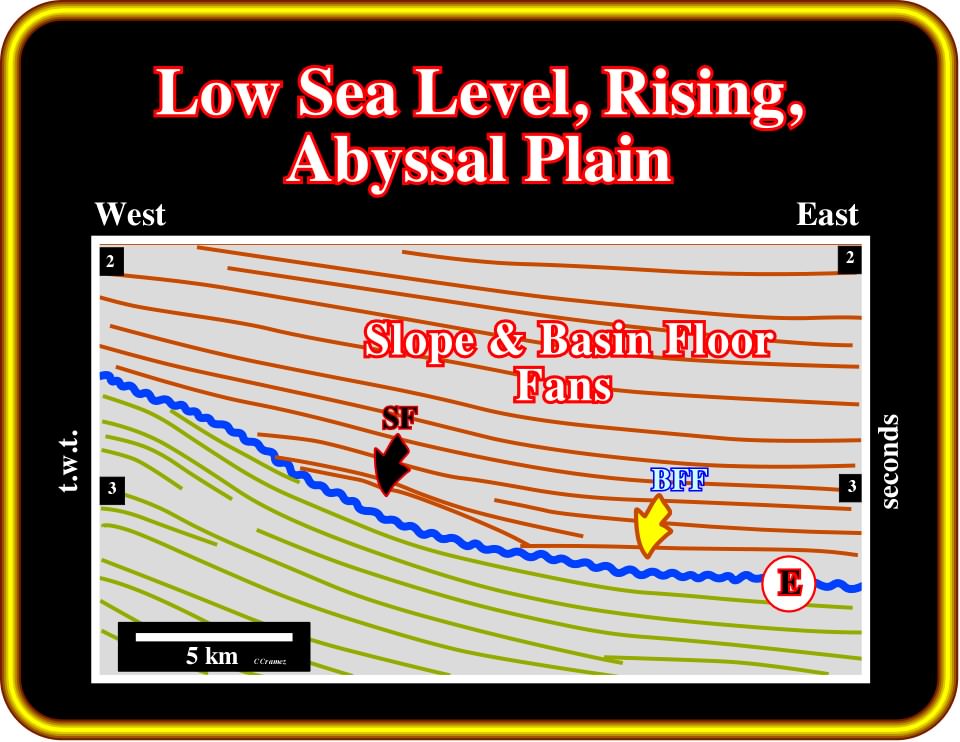
Plate 503- The deposition of a slope fan (SF) above the basin floor fan (BFF), readily recognized on this line near the toe of the slope of the E sequence cycle boundary and abyssal plain, suggests, in addition to the depositional environments, a lowstand setting with a rising of the relative sea level.
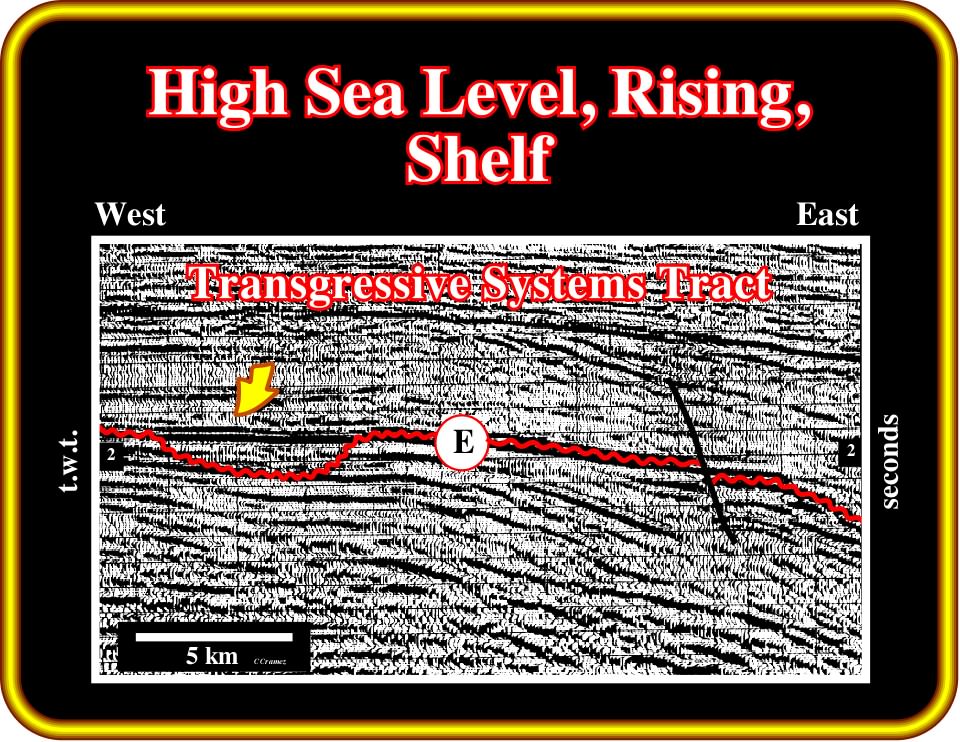
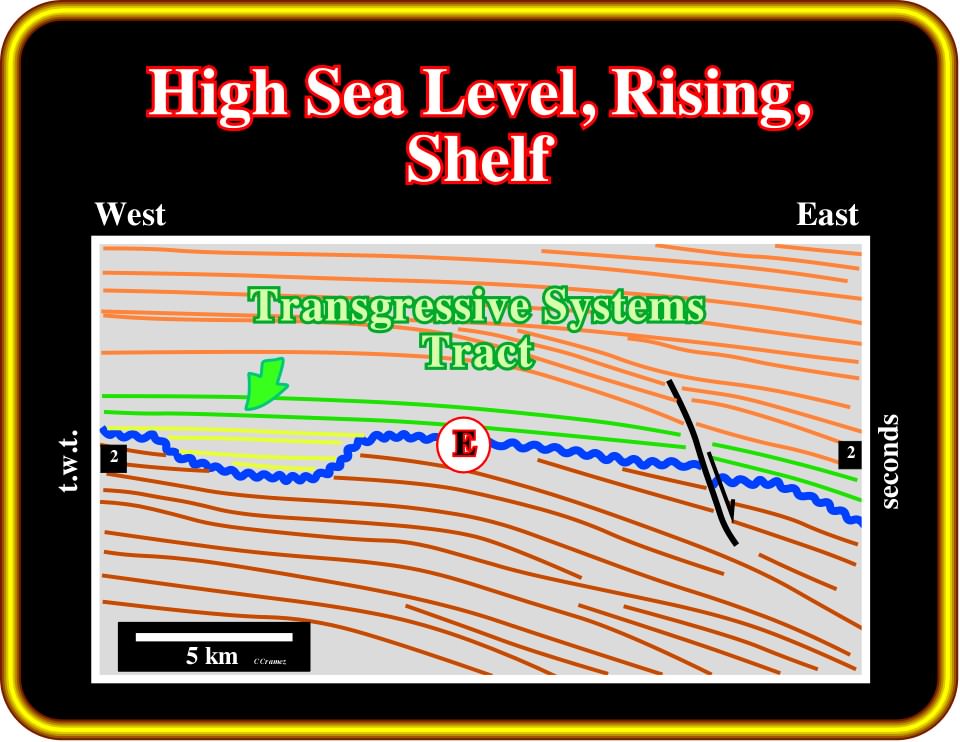
Plate 504- Above the incised valley fill, i.e., in a shelf environment, the deposition of a transgressive systems tract, underlined by the yellow arrow, indicates a rising of the relative sea level and the development of a highstand geological setting with creation of a shelf (platform).
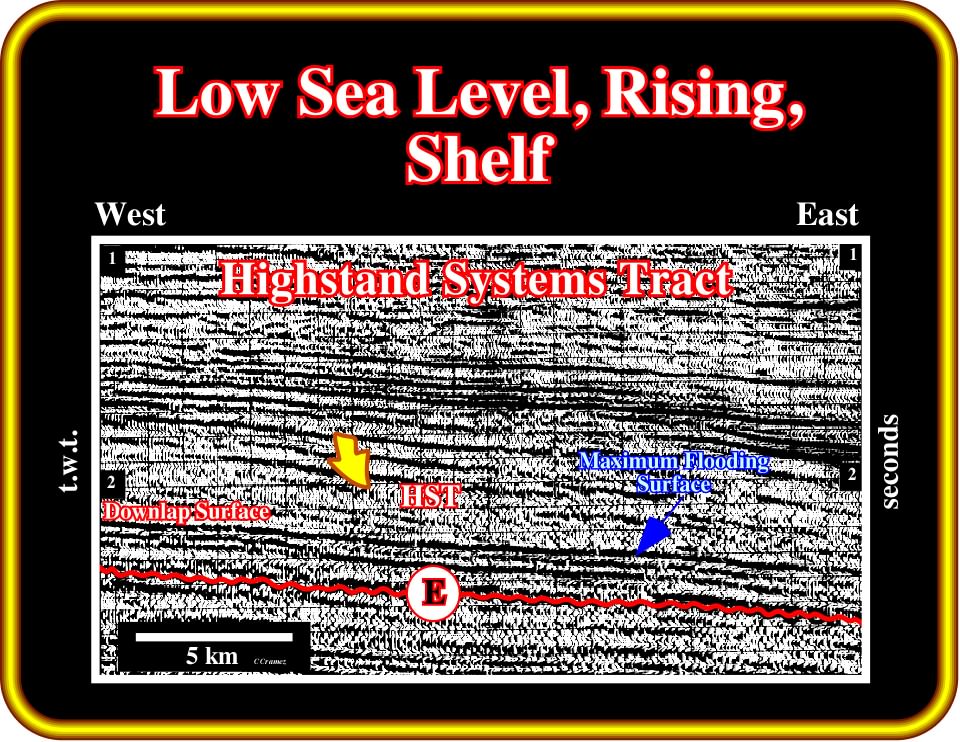
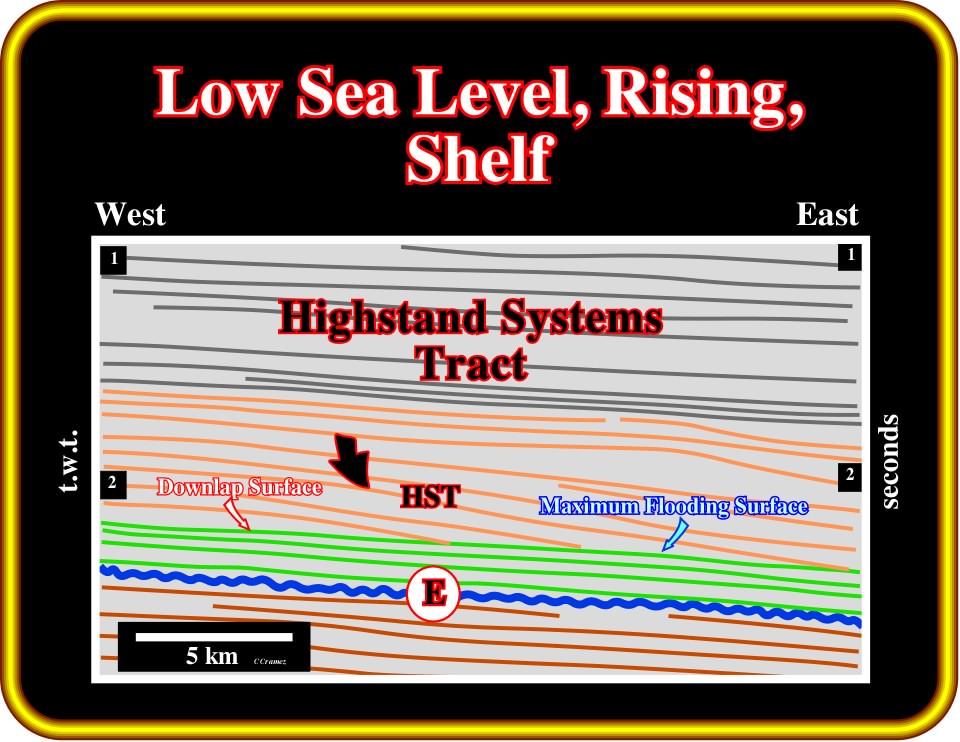
Plate 505- The highstand systems tract (HST) recognized above the maximum flooding surface, which limits the underlying transgressive systems tract suggests a shelf environment (when overlying the transgressive systems tract), a highstand geological situation and a decelerated relative sea level rise, i.e., a relative sea level rise with a decreasing rate.
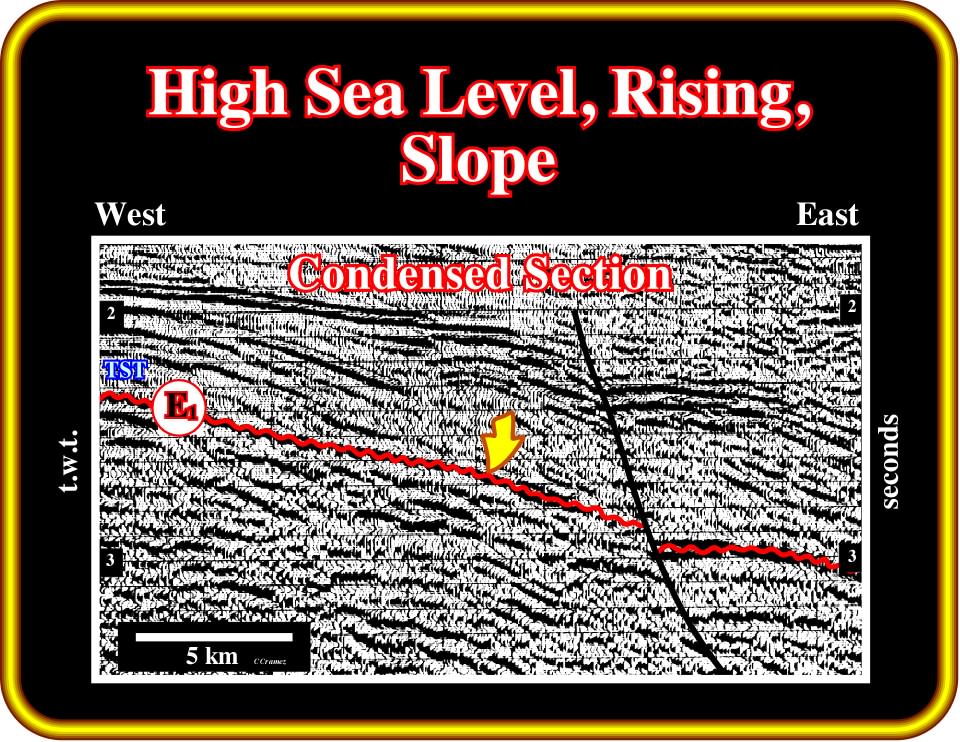
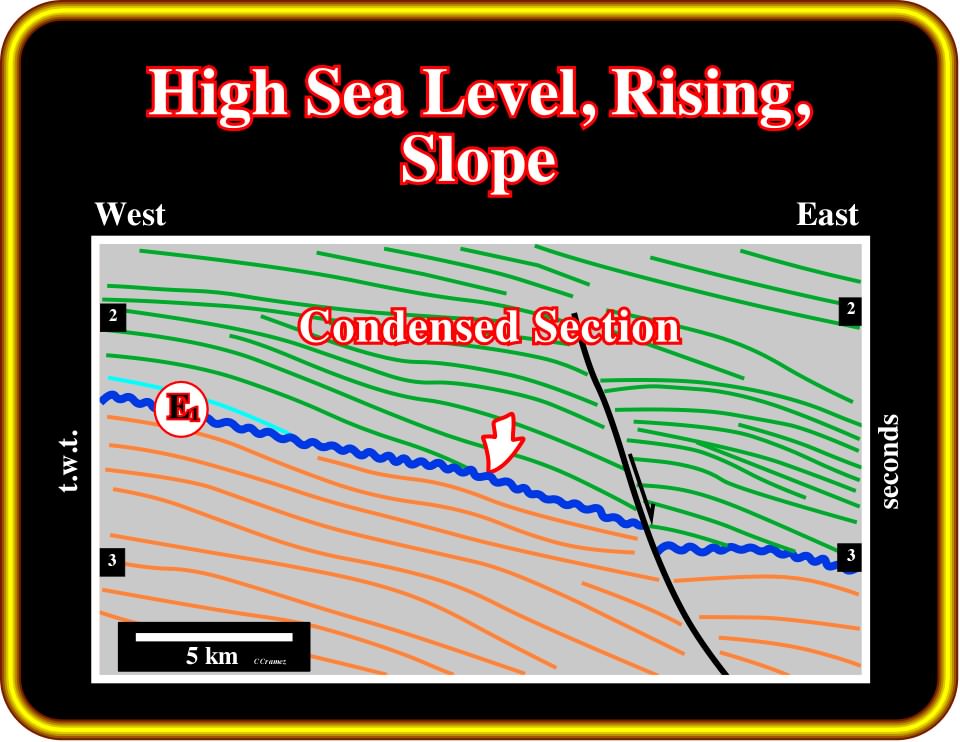
Plate 506- Here, in association with the distal shelf and upper slope of the unconformity E, i.e., seaward of the transgressive systems tract (TST) condensed stratigraphic section can be considered as basinward equivalent of the backstepping transgressive sediments. Condensed sections in the shelf and upper slope suggest relative rise of the sea level and highstand situations.
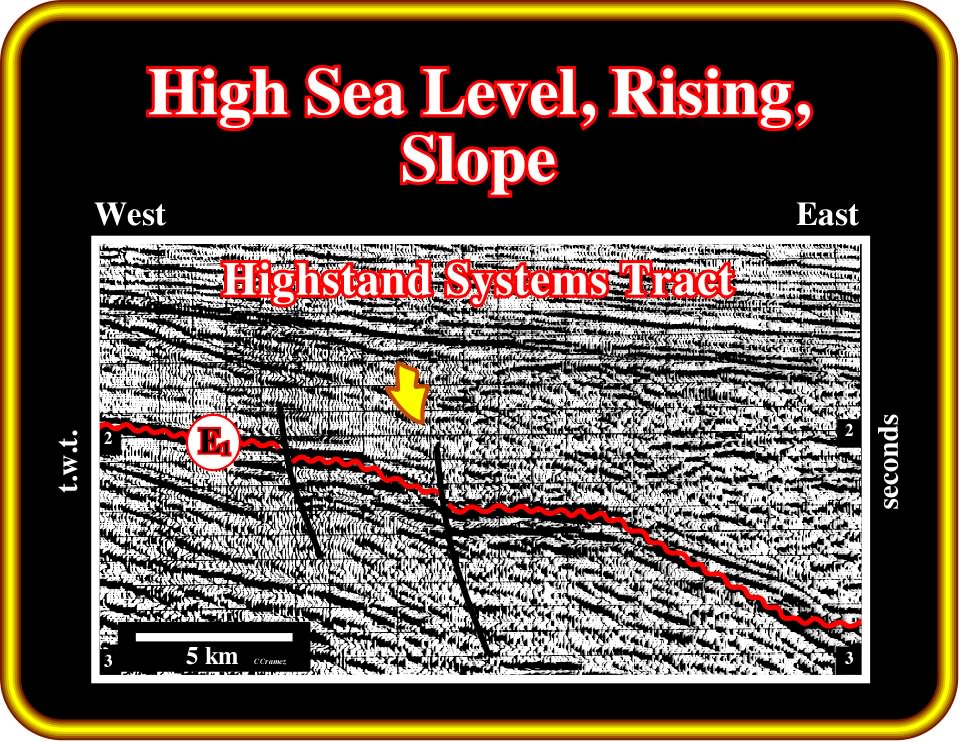
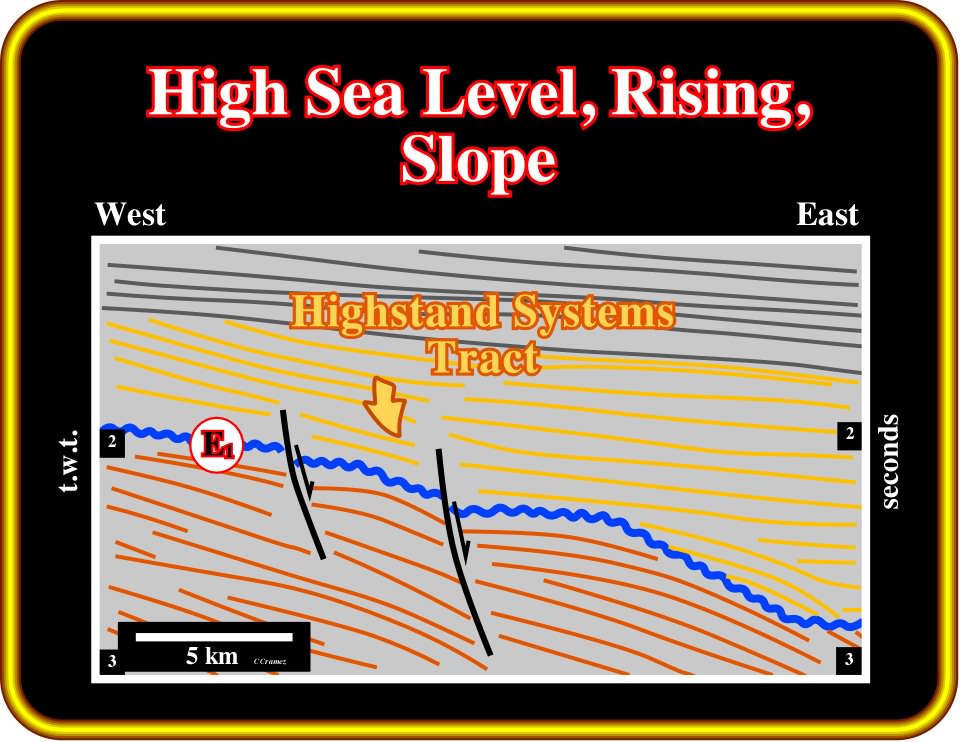
Plate 507- When highstand systems tracts overly condensed sections correlable updip with transgressive systems tracts, they suggest: (i) a slope environment, (ii) a sea level rise with a decreasing rate and highstand geological situations, i.e., a sea level higher than the shelf break.
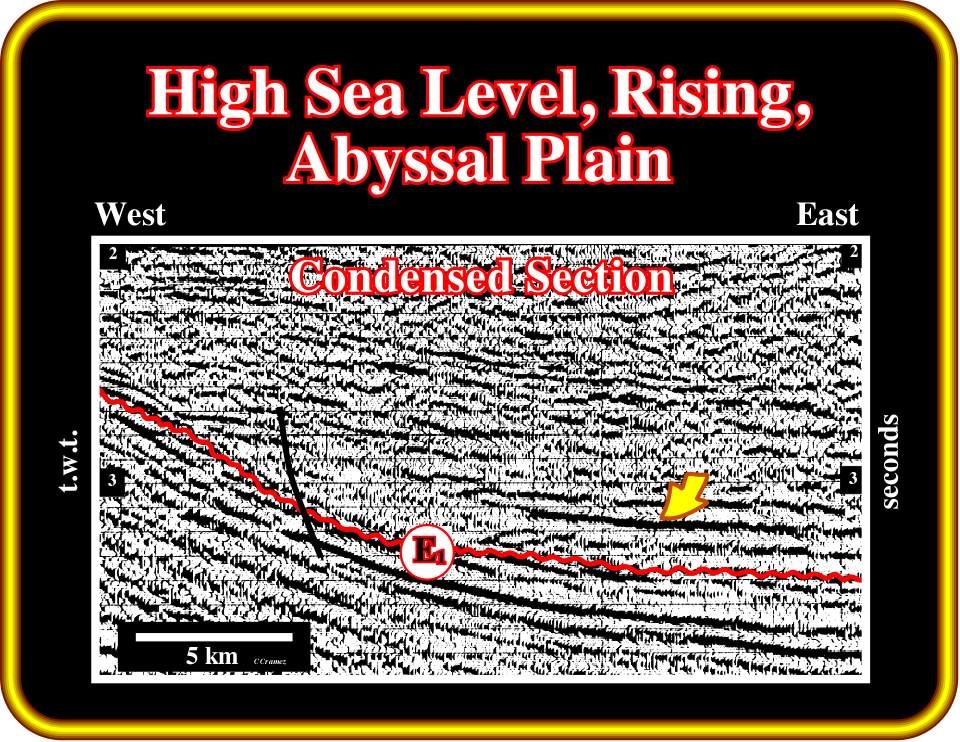
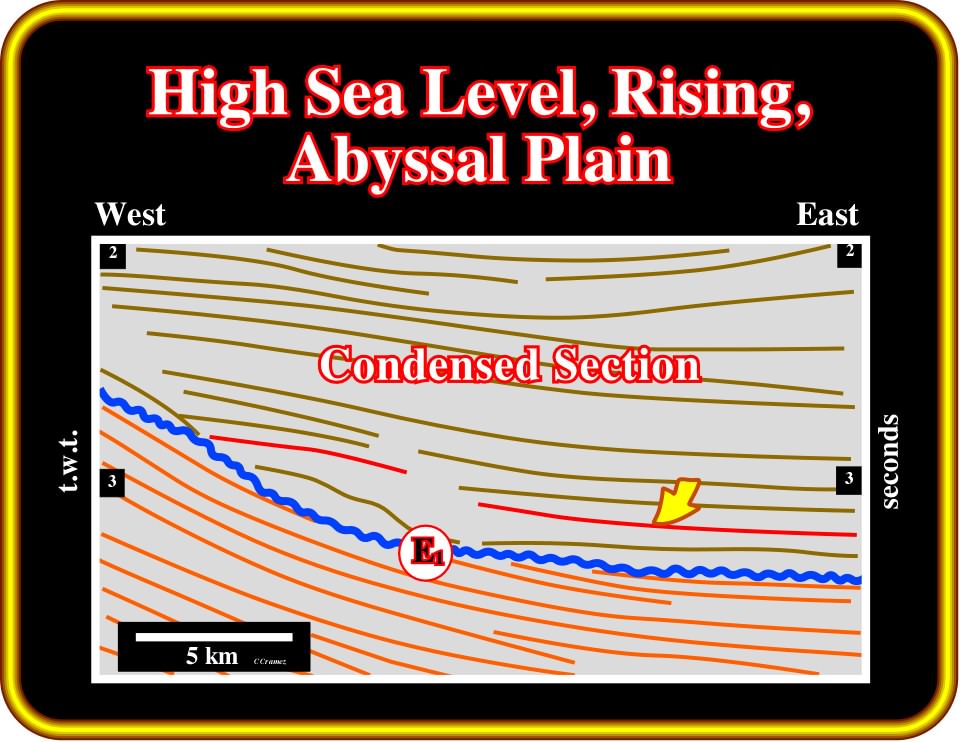
Plate 508- Condensed stratigraphic sections on the bottom of slope of abyssal plain suggest highstand geological conditions and a decreasing rate of the sea level rise and often a basin without a platform (shelf), i.e., that the depositional coastal break and the shelf break are coincident.
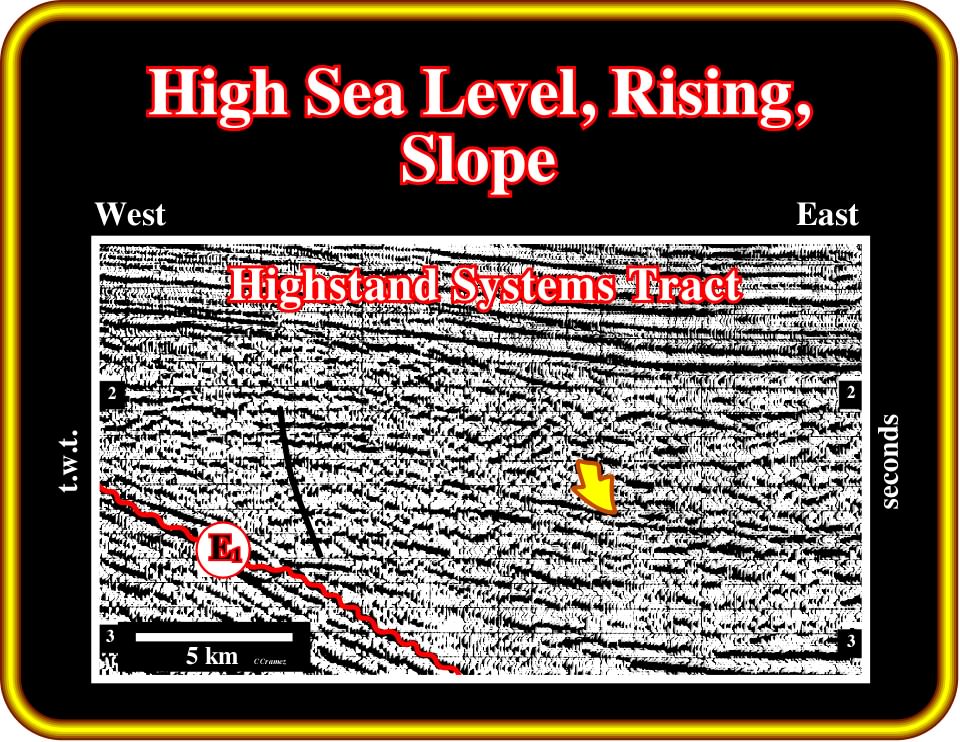
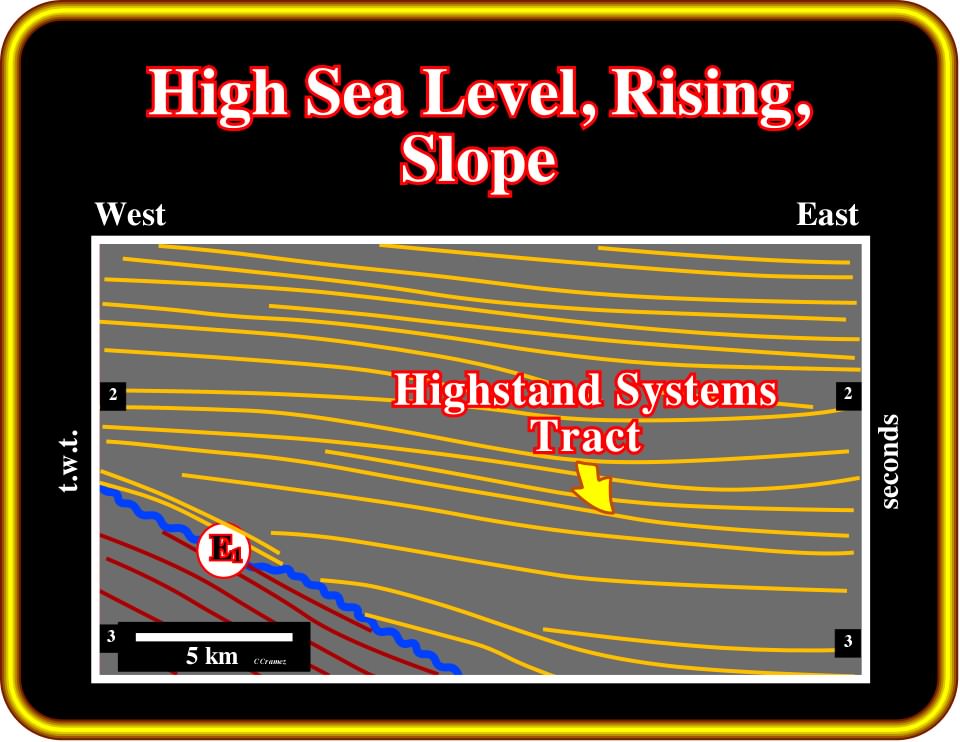
Plate 509- On this close-up, a condensed stratigraphic section located in the slope, as indicated by the yellow arrow, suggests a decreasing rate of the relative sea level rise in a highstand geological setting with the depositional coastal break probably coincident with the shelf break.